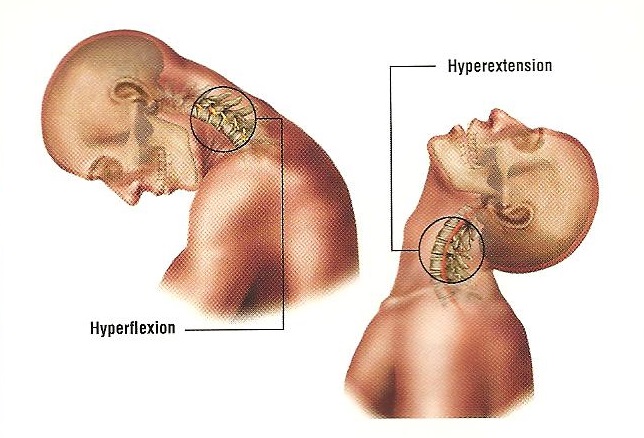Common Injuries
Seemingly out of nowhere, you hear the crash of colliding metal and breaking glass.
At precisely the same instant a massive force rips through your vehicle and your body.
Your seatbelt tightens around you and your head jolts back and forth, almost hitting the top of your steering wheel and then banging hard against your head rest.
If you’re lucky, that’s where things stop, and you come to rest, about a foot or two forward in the roadway from where you were before the hit, perhaps still waiting at a red light, still just behind the car in front of you.
So goes the archetypal rear-end collision.
For a lucky few, the dramatic and powerful force that rips through their body does no significant damage. Perhaps they have a sore neck and back for a day or two, but nothing that can’t be treated with rest and ibuprofen.
For many folks though, that car wreck is the start of a constellation of painful symptoms that compromises every aspect of their lives, from work, to pleasure, to their relations with their spouse.
Even a seemingly minor car wreck can cause a wide variety of injuries, to any part of the body
Here we’ll focus on the most common.
Concussion & Traumatic Brain Injury
A very common injury sustained by drivers and passengers in a car collision is a closed head injury. This kind of injury ranges from a mild concussion to a traumatic brain injury.
Just because there is no visible sign of trauma on the outside of the body, like bleeding or bruising, doesn’t mean the brain wasn’t jolted back and forth inside the skull as a result of the impact resulting in injury to the brain.
Whiplash & Spinal Injuries
Perhaps the most common car wreck injury is whiplash, which is a muscle and ligament strain in the cervical spine, that part of the spine that begins between the shoulder blades and extends upwards to the base of the brain.
The dramatic force of a rear end collision (or a collision from the side or front) results in a momentary straightening of the spine (as opposed to its customary S-shape), as the body flexes as a result of the impact.
This non-physiological flexion and extension (in lay terms, a stretching outside our customary range of motion), creates all kinds of unusual strains and stresses on the spinal mechanism and the cervical tissues. These can manifest as facet fractures, vertebral disc protrusions, and herniated vertebral discs.
In some of the worst cases, a herniated vertebral disc can impinge on the spinal cord, or on the nerves that run through the openings in the vertebral structure at either side of the spine (the neural foramen) that carry nerve signals to the arms and hands .
If the locus of the non-physiological flexion is the lower back (the lumbar spine), a resulting disk protrusion or herniation can create compromised nerve communication with the lower legs and feet (the lower extremities).
In the very worst cases, this kind of injury can lead to partial paralysis.
Facial Injuries
In a car wreck our head may jerk forward causing injury to the face if it collides with the steering wheel, the dash, a deployed airbag, the windshield, a side window, our car headrest, or shattered glass. Facial injuries can be relatively minor, like scrapes and bruises, or serious and significant, like lacerations and fractures, disorders of the jaw, and dental injuries.
Psychological Injuries
The injuries described above are just a few of those that can occur in a car wreck. Alongside these physical injuries comes a constellation of psychological injuries. These can include PTSD in some cases. Even where the distress is not that severe, the impact of a car wreck can be long-lasting and pronounced; straining relationships and damaging self-confidence.
CALL US TODAY TO MAXIMIZE THE VALUE OF YOUR PERSONAL INJURY CLAIM. 214 575 6060. WE ARE DALLAS PERSONAL INJURY LAWYERS. WE KNOW TEXAS INSURANCE. WE KNOW TEXAS LAW. WE FIGHT FOR YOU. DON’T SETTLE FOR LESS.




